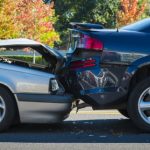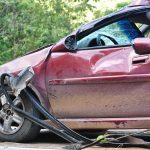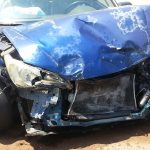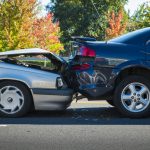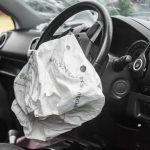Only Half of the Serious Injuries on Our Roads are Recorded

According to the NSW Centre for Road Safety, only half of the serious injuries caused by road collisions are recorded road trauma statistics, because police and hospital records cannot be matched.
The Centres reports that there were 11,557 people seriously injured on NSW roads in the 12 months to March 2018, but because 5702 of these people could not be matched to a police report, they were excluded from the official statistics.
Inaccurate data
The problem of data mismatch occurs when people do not report their crash to police, or when there are discrepancies between the personal details recorded by police at the scene of an accident and those given at the time of a hospital admission.
Between 2005 and 2015, there were more than 131,000 people seriously injured on NSW roads. Just over half of these (55 per cent) were matched to police reports.
People involved in single-vehicle crashes, and other ‘minor’ incidents involving bicycle and motorcycle riders, are more likely not to report the incident to police.
For cyclists, this has significantly skewed the statistics, so much so that it is estimated that about 80 percent of incidents involving cyclists go uncounted.
Reliance of data
The NSW Government spends millions of dollars on roads every year based on this serious injury crash data, a programme of decision-making which began in 2013.
The inaccuracies are an ongoing source of controversy, and there are good reasons to be critical of incorrect data.
In Victoria earlier this year, it was discovered that police had falsified more than 250,000 roadside breath tests over a five-year period, an issue only uncovered after Victoria’s Transport Accident Commission (TAC) detected anomalies in police statistics. The vastly exaggerated number of tests was an important factor relied upon by police to justify funding, and indeed secure more taxpayer dollars.
In NSW, the Government is heavily reliant on data, particularly when it comes to road infrastructure.
The State Government’s Road Safety Plan 2021, which was released earlier this year, earmarked $180 million to create safer intersections where a high percentage of serious injury crashes occur. An analysis of the data concluded that the majority of serious injury crashes happen in urban areas, with funding therefore heavily skewed to cities.
But, according to other non-government experts, single vehicle accidents which are not matched to police records tend to be more common on regional roads, and there is the potential for these to go unidentified.
This means the statistics may be unfairly impacting against those in regional NSW, who are getting less funding than they may be entitled to.
Is there a better way?
There are moves to ensure greater collaboration between NSW Police, NSW Health, NSW Transport and the State Insurance Agency to improve the accuracy of data.
There are also plans to include Ambulance data, which it is hoped will provide a much better picture of the situation.
National cohesion is required
This year’s inquiry into the National Road Safety Strategy [NRSS] found that serious injury reporting is overly reliant on fatality crash data. It further found there is “… still uncertainty over the level of injury and serious injury that results from road use, as well as uncertainty as to whether serious injuries are actually trending up or down.”
While the availability of accurate state-wide data is one thing, there is not currently effective national reporting, either. And with disparities in the numbers that are actually recorded, the picture is far from clear.
A key finding of the national inquiry was also that at a national level, implementation of road safety initiatives is failing.
The costs of road trauma
Road trauma costs the Australian economy billions of dollars every year – including in medical costs associated with helping people to get their lives back on track and lost productivity. There are also significant social costs.
The final report from the NRSS inquiry predicts that failing to improve our current situation will result in 12,000 people killed and 360,000 admitted to hospital at a cost of over $300 billion over the next decade alone.
Census data shows that in NSW, there are 5 million cars registered and more than 200,000 motorcycles.
As the numbers keep growing, we all have a responsibility to drive safely and keep the road toll down.
Aside from busy intersections, worn out roads and other trouble spots within the road network, driving under the influence, fatigue, speed and mobile phone use remain the top causes of accidents.
Going to court for a traffic offence?
If you are going to court for a traffic offence, call or email Sydney Criminal Lawyers anytime to arrange a free first consultation with an experienced, specialist traffic lawyer who will accurately advise you of your options, the best way forward, and fight for the optimal outcome in your specific situation.


